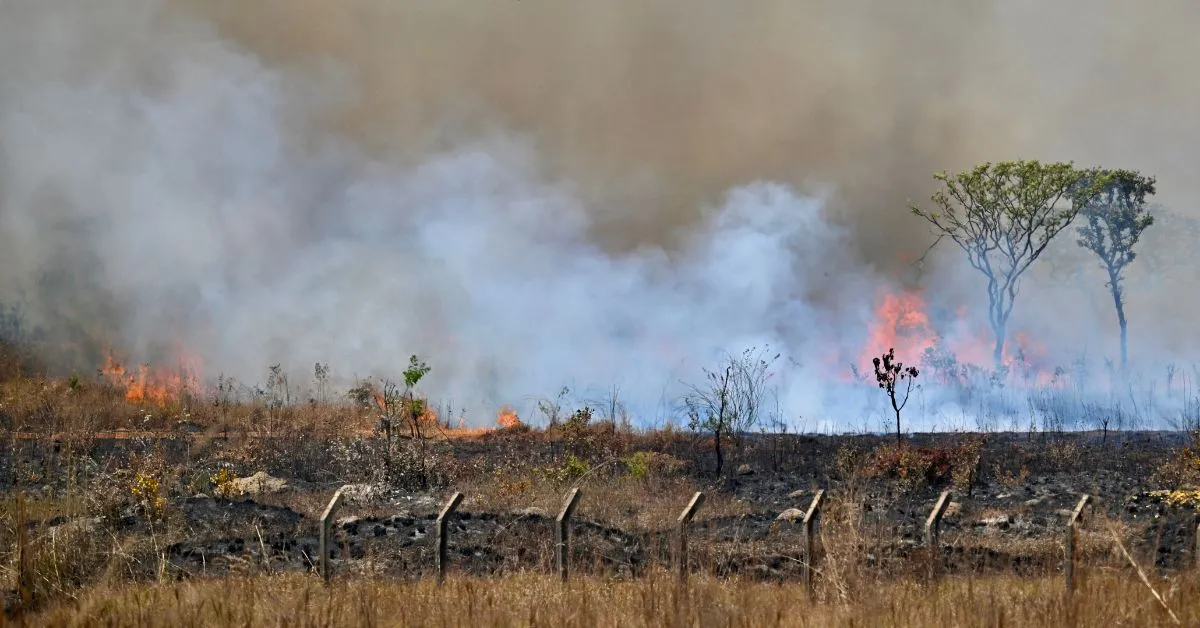
Forest fires have emerged as one of the most worrying challenges of 2024, a problem that does not respect national, regional or continental borders. Over the past 14 months, humanity has witnessed a series of extreme events that have marked each month as the hottest on record, an alarming trend that underscores the magnitude of the global climate crisis. The combination of record temperatures, prolonged droughts and human intervention has created an environment prone to devastating fires, with consequences extending far beyond the areas directly affected.
A global phenomenon
In 2024, wildfires are raging across parts of the world with unprecedented intensity and frequency. In New Zealand, China, South Korea and Russia, fires have demonstrated their destructive capacity, devastating vast tracts of land.
France has also suffered during the summer, facing numerous fires that have tested its response capacity. In the United States, more than two million hectares were reported affected last year, but so far this year the figure has reached three million hectares, setting a new discouraging record.
The situation in South America is even more worrying. So far this year, Nearly 350,000 fires have been recorded in the region, affecting countries such as Paraguay, Chile, Colombia, Bolivia, Peru and Ecuador. Of these, more than half have occurred in Brazil, with nearly 180,000 outbreaks.
This alarming increase in the number of fires has a devastating impact, especially when one considers that many of these fires are located in the Amazon.
The Amazon: an ecosystem in danger due to forest fires
The Amazon is one of the most important regions for global biodiversity. This rainforest and jungle not only hosts one of the richest concentrations of species on the planet, but also plays a crucial role in regulating the global climate. The Amazon River basin, which includes the river itself and its tributaries, is the most biodiverse watershed in the world. Specifically, of the 17 megadiverse countries that occupy only 10% of the global territory, five are located in the Amazon region. These countries together are home to approximately 70% of the known species in the world.
The fires in the Amazon not only They are not only destroying this invaluable ecosystem, but they are also disrupting the global rainfall cycle. The loss of vegetation in the region is reducing the amount of rain that falls, creating a vicious cycle of prolonged droughts that, in turn, encourage more fires. This situation has a domino effect, affecting the ability of the region to recover and sustain biodiversity.
What could happen if forest fires are not controlled?
The impact of forest fires is not limited to the immediate destruction of forested areas. The burning of vegetation and the destruction of soil destabilize the terrain, eliminating natural barriers such as moss and plants that protect the soil. This not only increases susceptibility to future fires, but also contributes to soil erosion and nutrient loss, further complicating the regeneration of the affected ecosystem.
In addition, fires release large amounts of carbon dioxide (CO2) into the atmosphere, contributing to global climate change. Deforestation and forest burning increase global warming, creating conditions that encourage even more fires in the future. Thus, breaking records in terms of burned areas is not a victory, it is a sign of loss and continued deterioration.
The scale of the fires in 2024, especially in critical regions such as the Amazon, highlights the urgency of addressing climate change and protecting our most vital ecosystems. The solution requires concerted global action to mitigate greenhouse gas emissions, promote sustainable practices and strengthen natural resource management. The future of our planet depends on our ability to face this challenge with the seriousness and commitment it requires.
Source: https://www.noticiascaracol.com/mundo/incendios-forestales-se-estan-convirtiendo-en-amenaza-global-como-contrarrestar-esto-rg10


